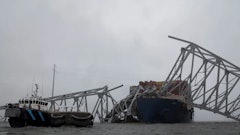
As seen in the State of the Industry reports featured in our February 2021 issue, there are mixed opinions as to what the future holds for construction. There are far too many “what ifs” in play for a general consensus at this point. Still, the optimist in me believes we will see positive things ahead — they may just be a little further down the path than we had hoped.
To better position yourself in the meantime, I suggest you assess the strengths and weaknesses within your organization to determine how you can build on the former while correcting the latter where possible. This calls for a “deep dive” into what’s happening in the office and in the field to identify what’s going right, and which aspects of your business could stand improvement.
Looking at potential weaknesses first, there’s been a lot of discussion about the influx of technology into the industry as companies sought to address pandemic restrictions, ensure communication internally and between parties on projects, and maintain productivity with limited staff/smaller crews. Certainly, technology can make various aspects of an organization more efficient. But before investing in it — or equipment or other tools, for that matter — it’s important to identify which aspects of your business will benefit most long term.
For example, have you historically struggled to get billing out on time — or to deliver accurate bids? Are you losing money to inefficient use of materials or equipment — or is rework draining profit on projects? Pinpointing the biggest areas of weakness can help you assess where an investment in tech, equipment and/or processes could enhance efficiency, and profits, for the foreseeable future.
Next, look at the strong points within your organization. In most companies, the greatest strength is the people. As such, consider how you can build upon this strength. What training, tools and/or resources can you provide that can make employees even greater assets? Are there ways you can make their jobs easier and thus make productive employees even more so? How might you utilize existing people and resources to help good workers become even better? Talented, skilled employees are hard to come by and essential to a company’s success. They’re well worth any time and investment put into their retention and growth.
Your equipment fleet should, in theory, be another area of strength for your company. But these critical assets require care and attention on an ongoing basis to keep them performing at peak. Take a close look at fleet management records to ensure inspections and preventive maintenance are being performed properly and in a timely manner. Assess equipment utilization and owning and operating costs. Identify those assets that continue to perform and cover their costs, and those that may be nearing the end of their life in your fleet. Keep those that deliver ROI and weed out those that are under-utilized or have costs that are ratcheting up. Evaluate acquisition options to identify how needed units can be most cost-effectively replaced.
I’ve barely scratched the surface when it comes to a business assessment. But hopefully this gets you thinking about how you might approach a deep dive into your operation, as well as the potential impacts changes taken now could have in the months and years ahead.






























